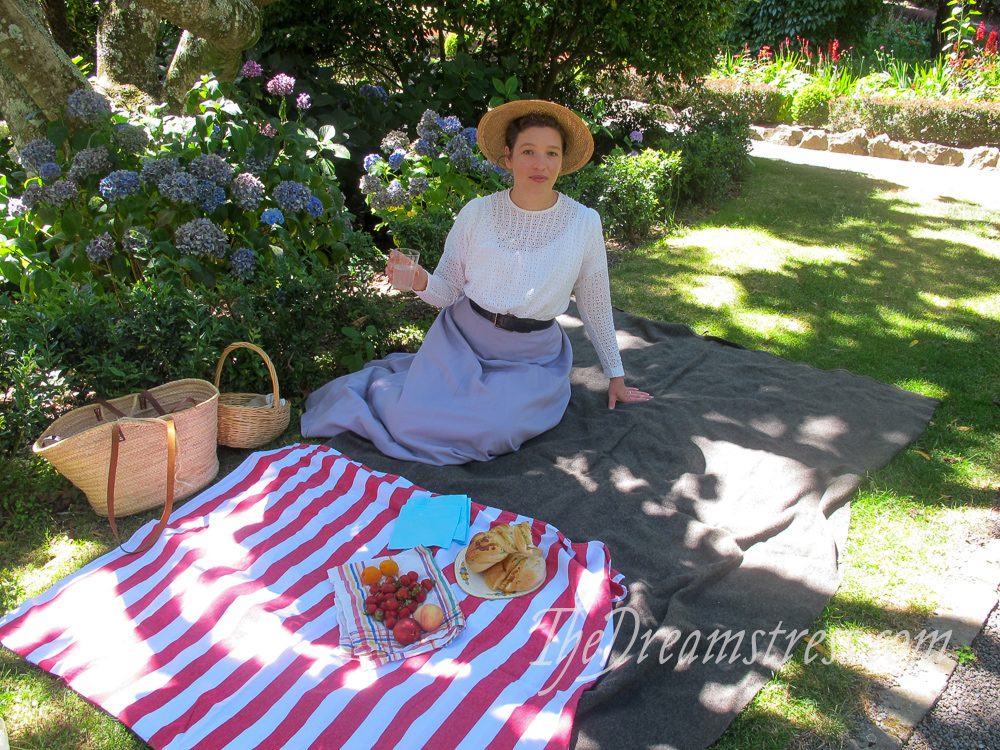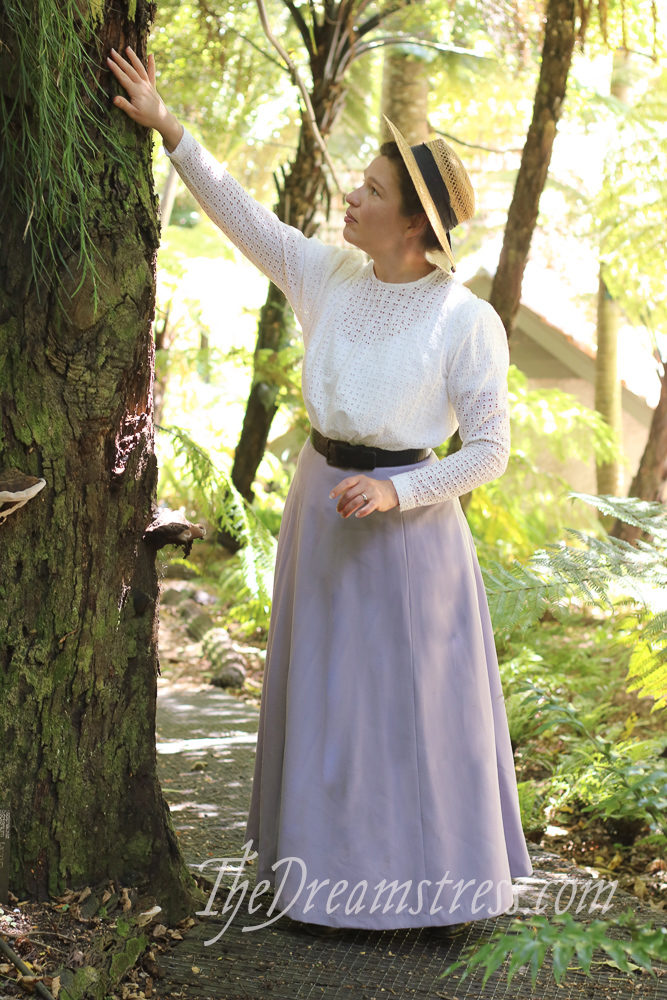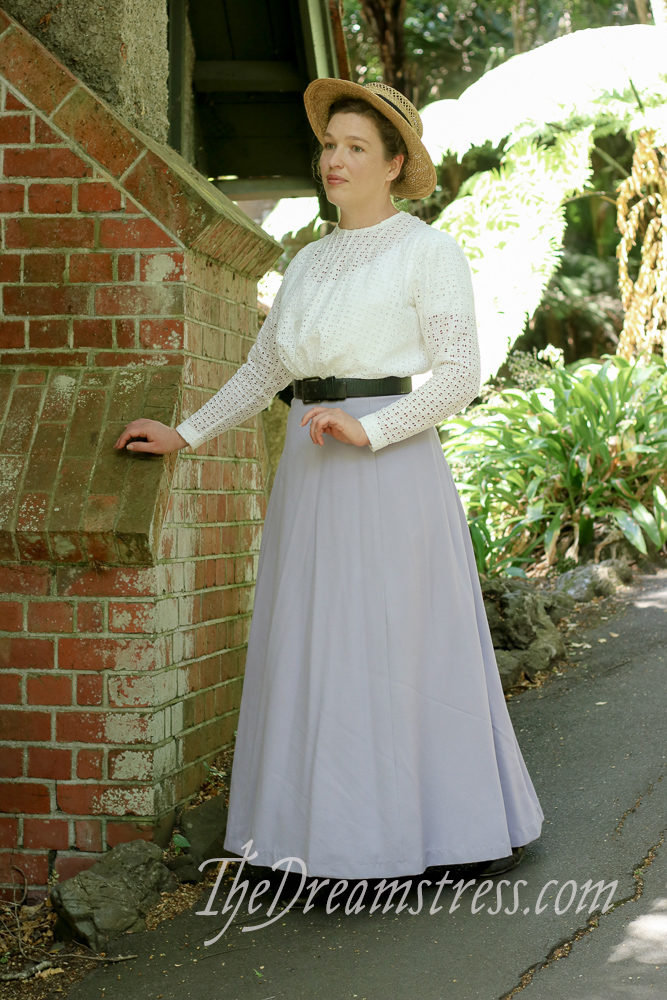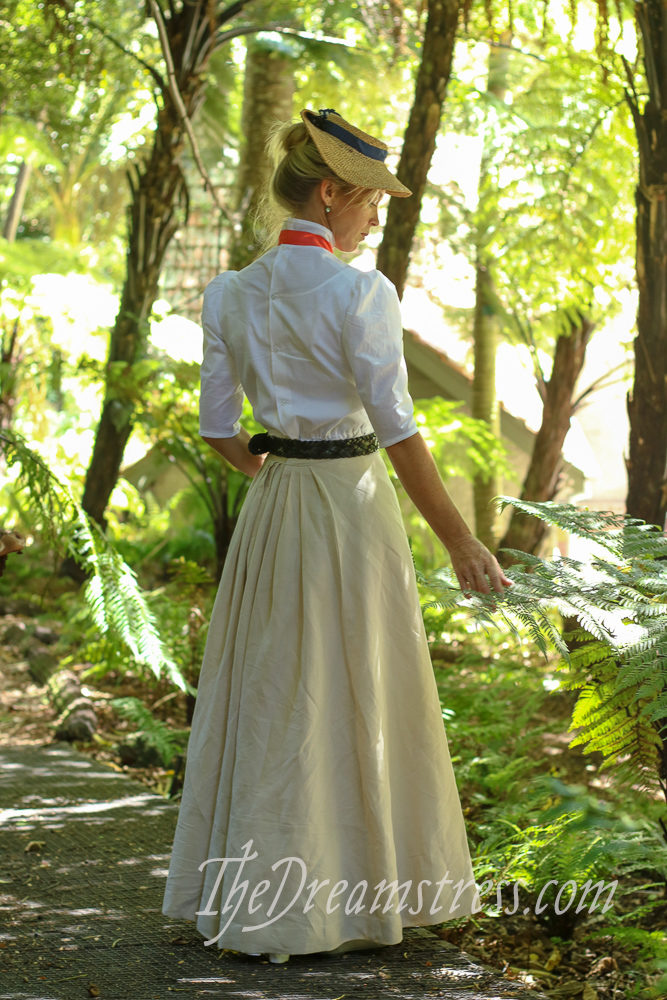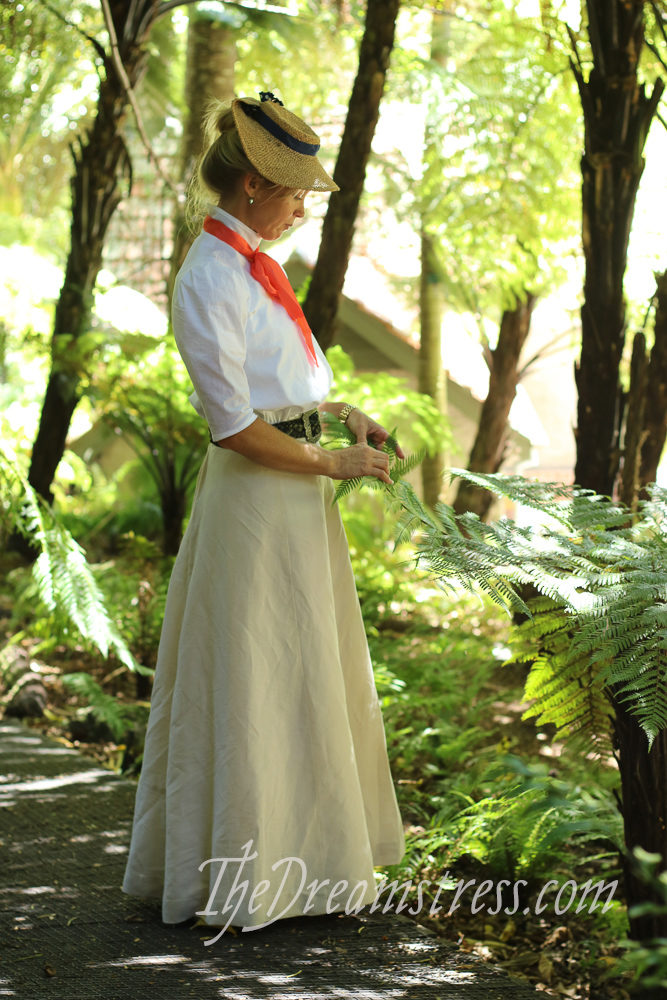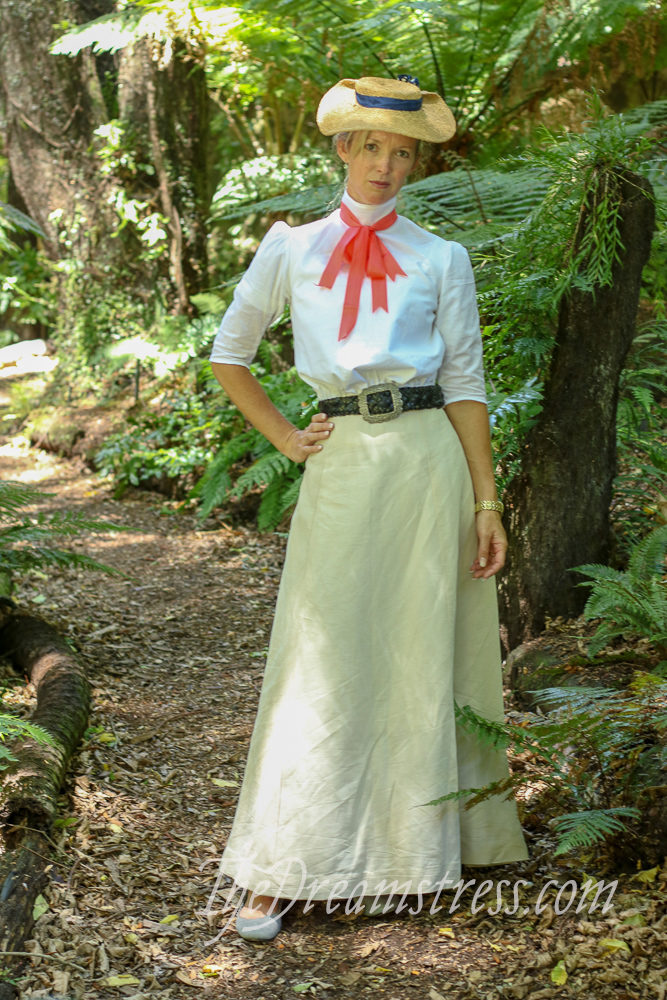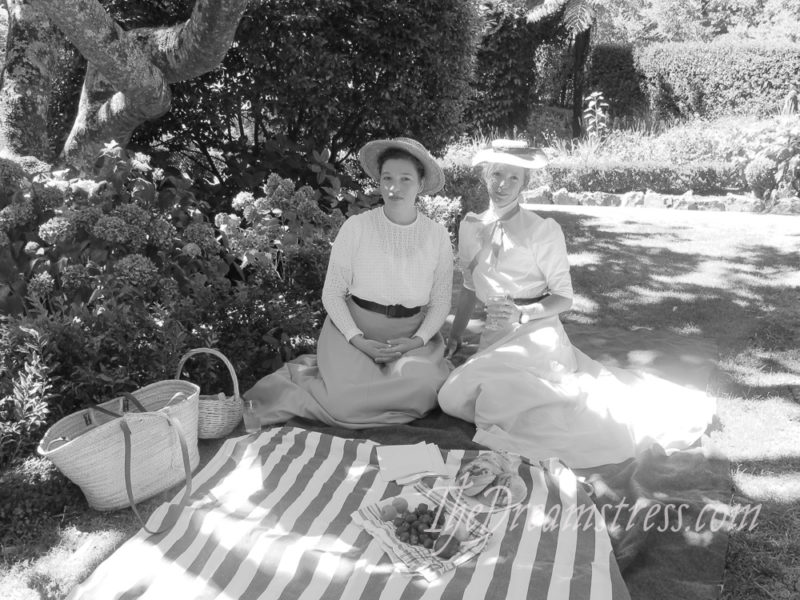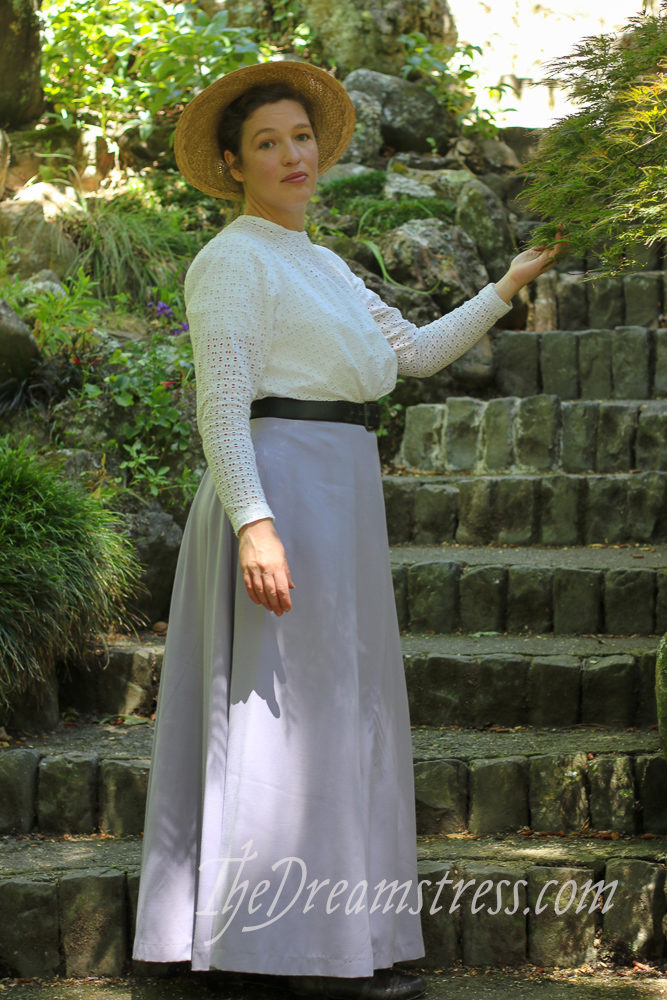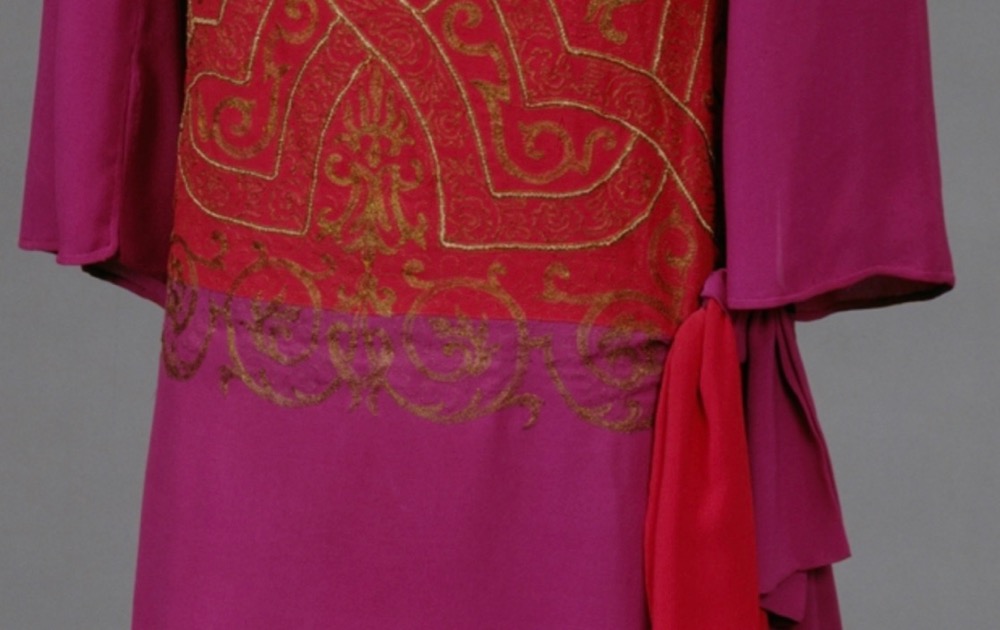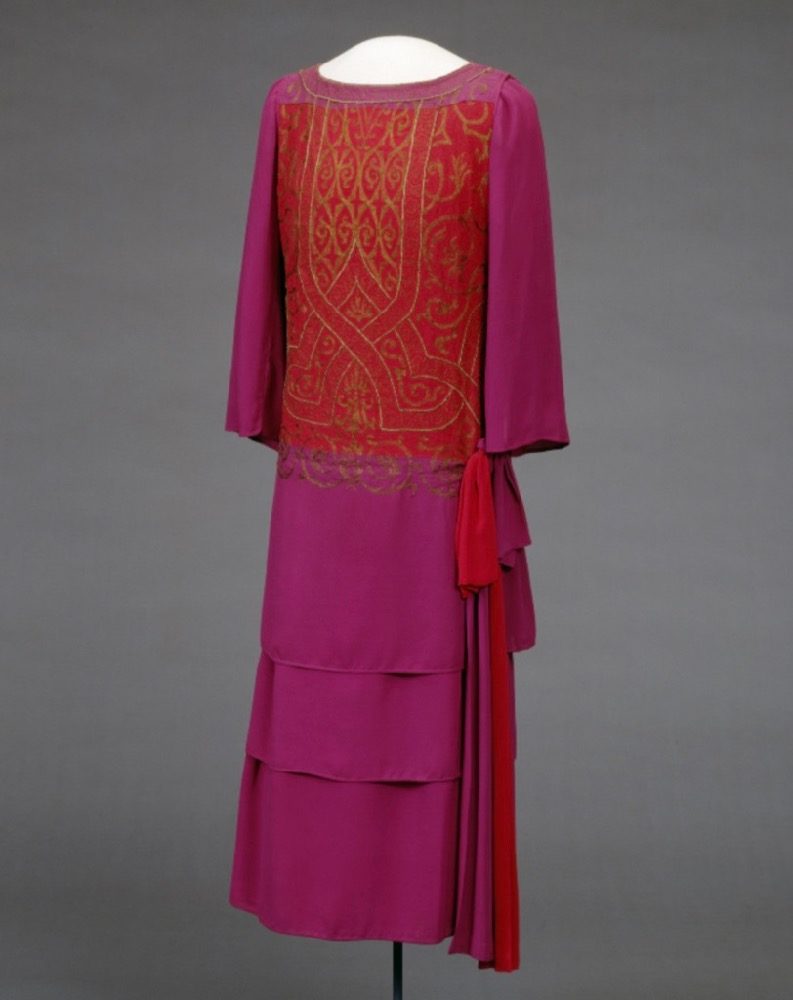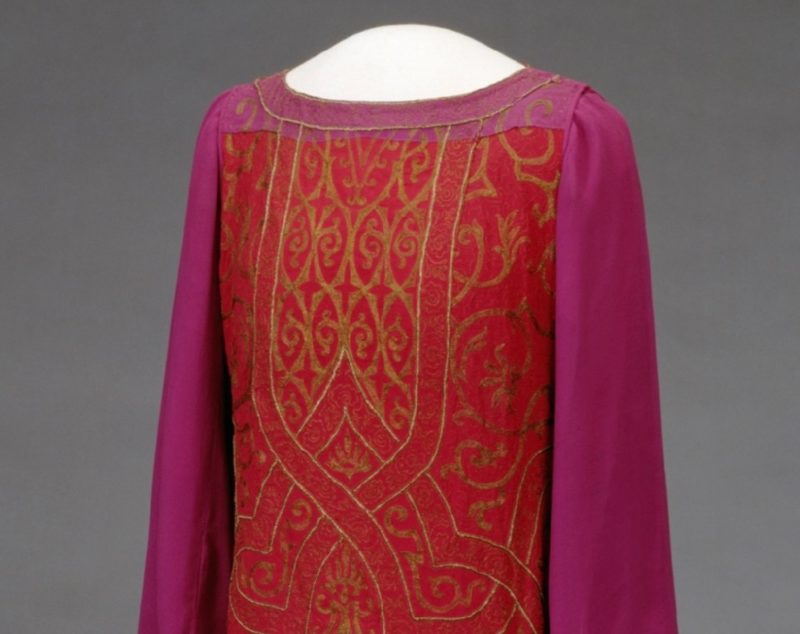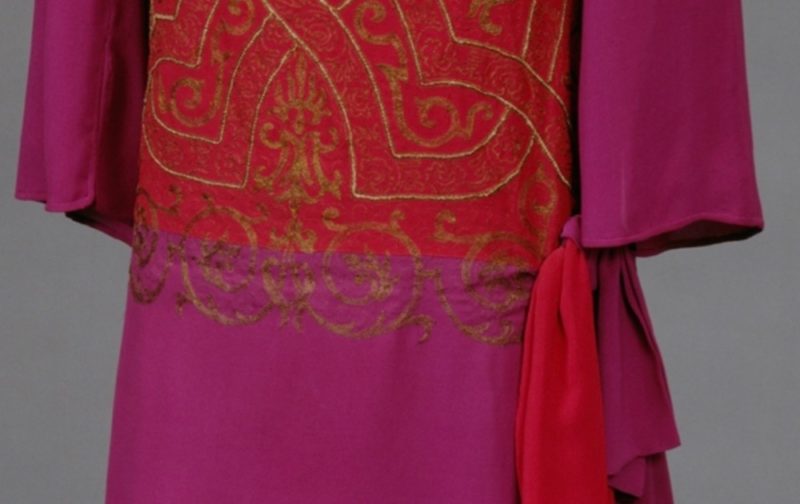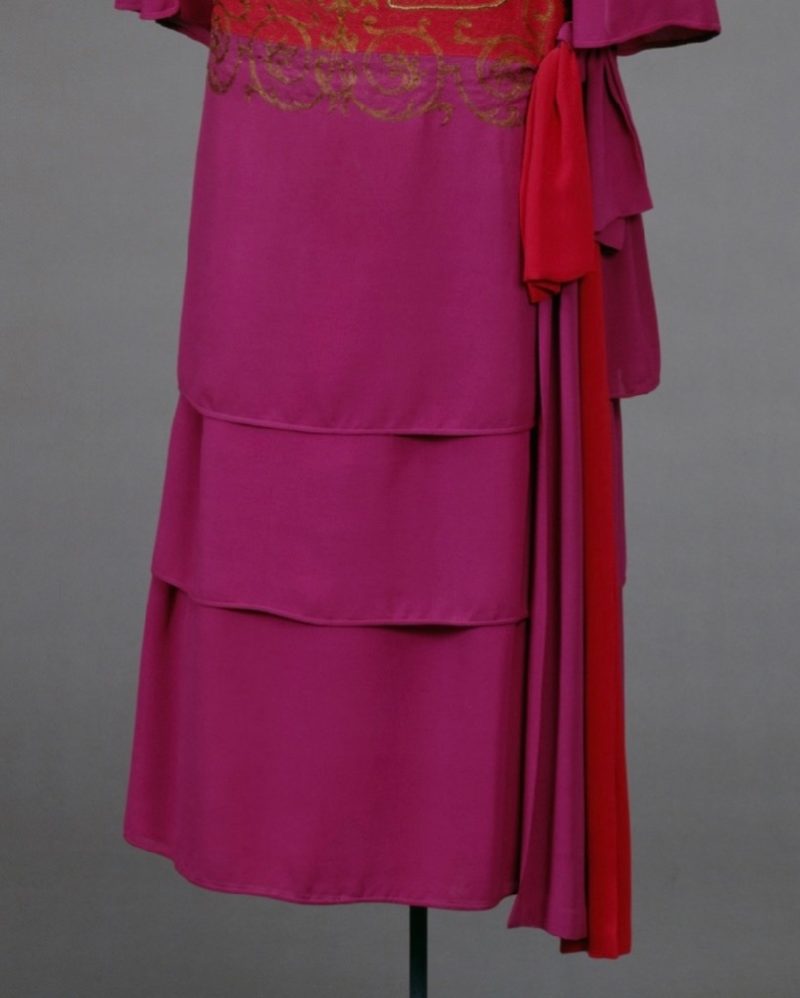A colleague and I were discussing Anne of Green Gables and her love of puffed sleeves today. It’s amazing how that episode has become such a defining feature of so many of our formative years – and often our introduction to historical fashion. In keeping with our talk, I’ve picked an 1890s dress with the puffiest of puffed sleeves for this week’s Rate the Dress, although the colour might not have been so much to Anne’s taste – at least not for long.
Last week: a 1920s number in tomato red and fuchsia with gold
Ratings for last week’s dress were all over the place – everything from 1 to 10, and every number in between (except 2, which rather disappoints me. 2 is a much more inventive rating than 1 – it says “I really don’t like this, but I have thought about exactly, exactly why). There were four times as many 10s and 1s, but also quite a lot of the in-betweens, which will explain the rating of…
The Total: 7.5 out of 10
Rather low, seeing as the single most common rating was 9, 10 was the second most common rating, and 8 was the third!
This week: an 1890s reception gown in pumpkin orange
The puffed sleeves of this dress are, the obvious link to Anne of Green Gables, but the colour reminds me of another, slightly more obscure part of her story. Remember the episode of the pumpkin preserves in Windy Willows/Windy Poplars (depending on which country your version was published in)? Anne loves them the first time she is served them, and raves about ‘eating preserved sunshine’ – only to be served them at every house she’s invited to as school principal, and to be given jars to take home, until she is heartily sick of them.
Well, this dress is just the colour I imagine pumpkin preserves to be – and google images concurs that PP may come in as many different shades of golden orange as Augusta Auctions has given us colour options for this dress.

I can’t tell you exactly what colour the dress is in real life, but I can tell you a bit more about it. It is classic mid 1890s in style – the extremely large, but slightly soft leg-o-mutton sleeves are a very helpful clue for dating.
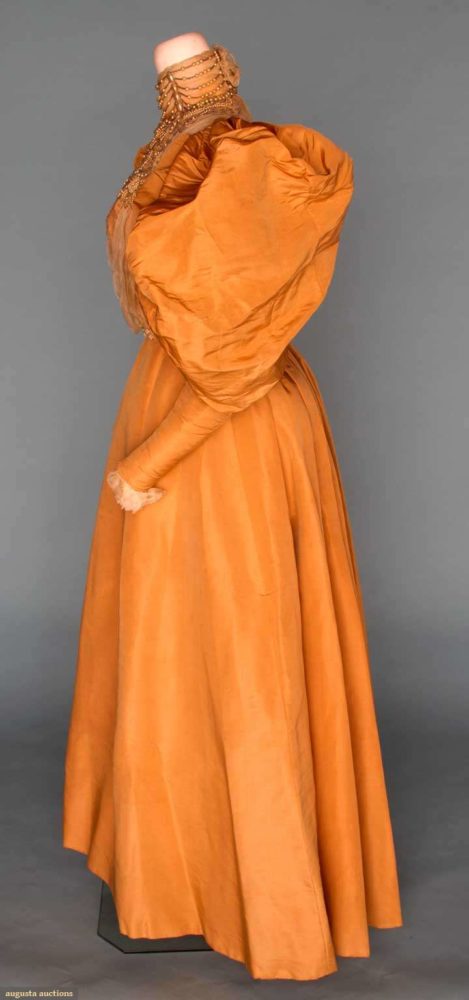
The silk faille paired with a soft and delicate chiffon, bright colour, and lavish beaded embellishment on the bodice identify it as a formal dress for indoor daytime wear – a reception gown.
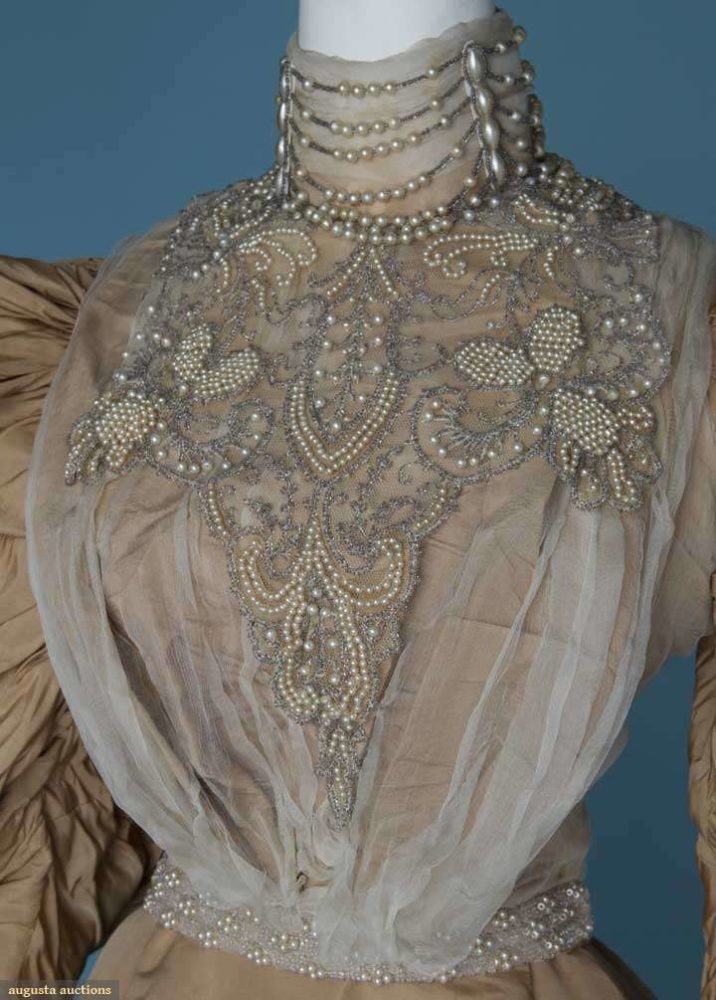
The bodice decoration is very interesting. The heavy use of pearl beads provides visual impact from a distance, but it is softened and diffused by the chiffon veiling, which contrasts with the more structural elements of the dress, and hints at the Edwardian aesthetic to come.
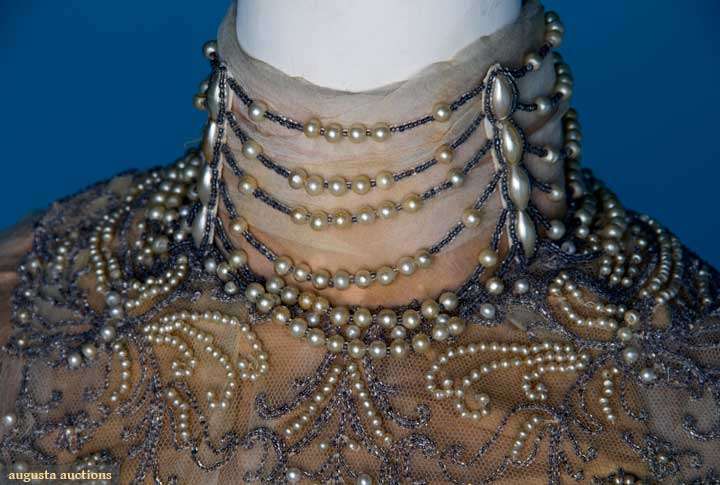
The pearl beading continues on to the collar, evoking the high collared necklaces made famous by Alexandra of Denmark, arguably the most influential style icon of the late Victorian era.
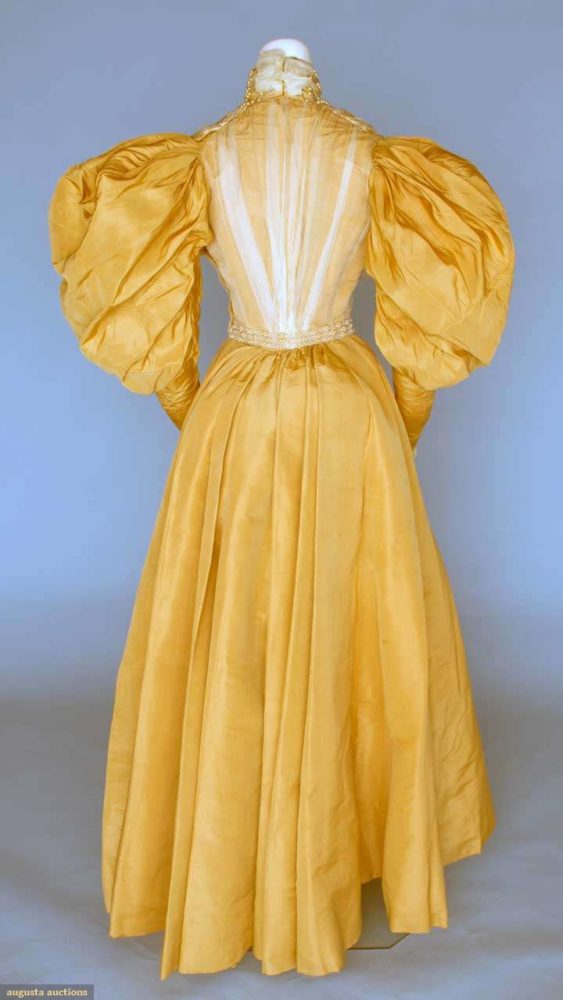
Typically of 1890s fashion, the heavily ornamented bodice is paired with a fairly simple skirt – in this case a 5 panel A-line which is almost a perfect match for the Scroop Fantail skirt pattern (currently not available for sale, but about to be re-launched with an expanded size range).
What do you think of this dress? Do you love it as much as Anne loved puffed sleeves? Or like Anne liked PP: quite a lot at first, but the more you see of it, the worse it gets? Or perhaps (drawing from the same Anne book – and spoiler alert for a 90 year old work, if that’s still an issue.) it’s a Pringle dress: terrible at a quick glance, but actually quite wonderful once you get to know it.
Rate the Dress on a Scale of 1 to 10
A reminder about rating — feel free to be critical if you don’t like a thing, but make sure that your comments aren’t actually insulting to those who do like a garment. Our different tastes are what make Rate the Dress so interesting. It’s no fun when a comment implies that anyone who doesn’t agree with it, or who would wear a garment, is totally lacking in taste.
(as usual, nothing more complicated than a .5. I also hugely appreciate it if you only do one rating, and set it on a line at the very end of your comment, so I can find it! And 0 is not on a scale of 1 to 10. Thanks in advance!)

